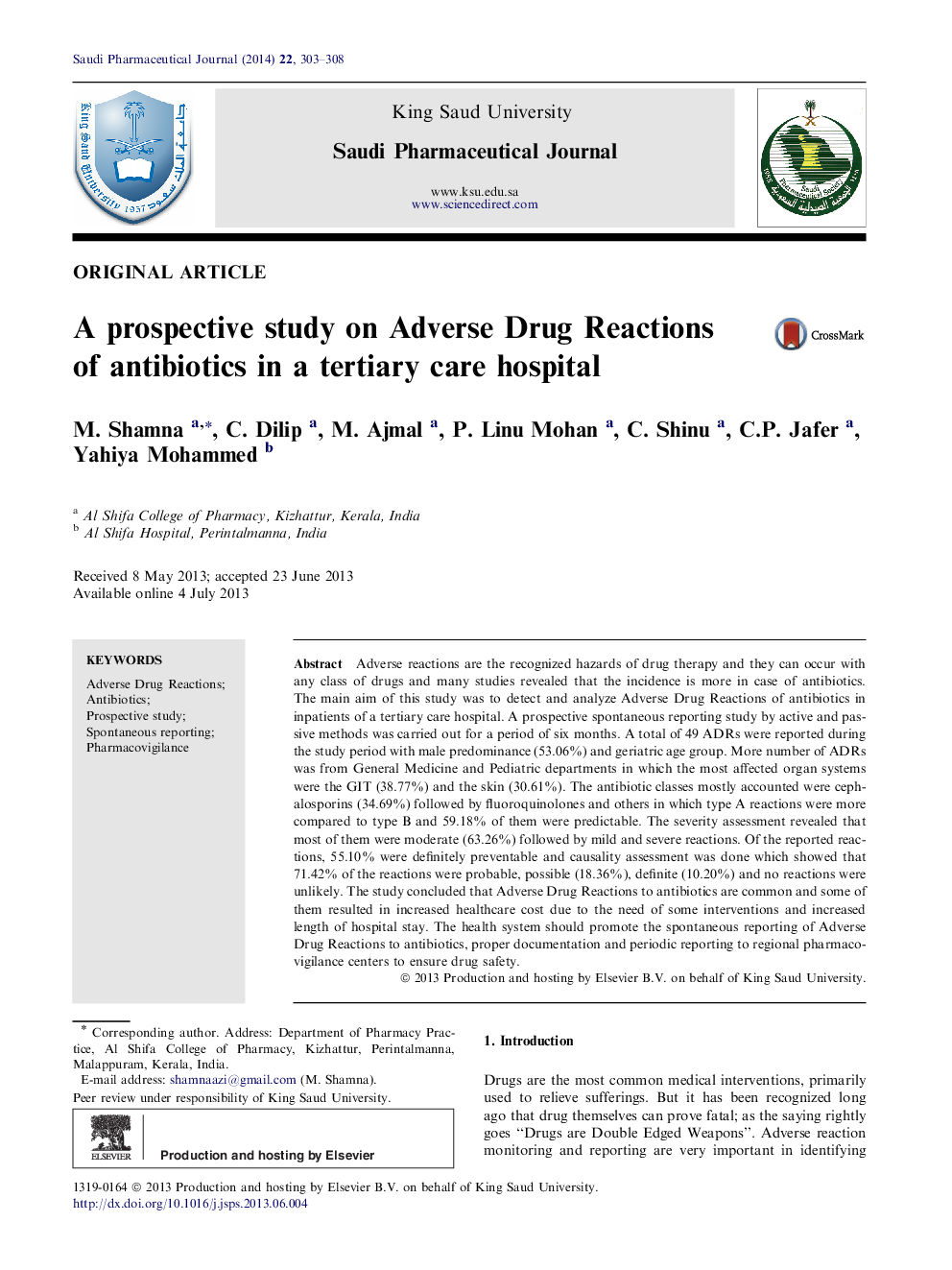| Article ID | Journal | Published Year | Pages | File Type |
|---|---|---|---|---|
| 2509360 | Saudi Pharmaceutical Journal | 2014 | 6 Pages |
Adverse reactions are the recognized hazards of drug therapy and they can occur with any class of drugs and many studies revealed that the incidence is more in case of antibiotics. The main aim of this study was to detect and analyze Adverse Drug Reactions of antibiotics in inpatients of a tertiary care hospital. A prospective spontaneous reporting study by active and passive methods was carried out for a period of six months. A total of 49 ADRs were reported during the study period with male predominance (53.06%) and geriatric age group. More number of ADRs was from General Medicine and Pediatric departments in which the most affected organ systems were the GIT (38.77%) and the skin (30.61%). The antibiotic classes mostly accounted were cephalosporins (34.69%) followed by fluoroquinolones and others in which type A reactions were more compared to type B and 59.18% of them were predictable. The severity assessment revealed that most of them were moderate (63.26%) followed by mild and severe reactions. Of the reported reactions, 55.10% were definitely preventable and causality assessment was done which showed that 71.42% of the reactions were probable, possible (18.36%), definite (10.20%) and no reactions were unlikely. The study concluded that Adverse Drug Reactions to antibiotics are common and some of them resulted in increased healthcare cost due to the need of some interventions and increased length of hospital stay. The health system should promote the spontaneous reporting of Adverse Drug Reactions to antibiotics, proper documentation and periodic reporting to regional pharmacovigilance centers to ensure drug safety.
